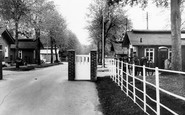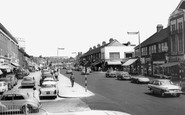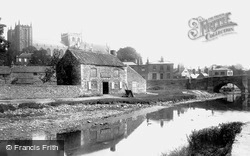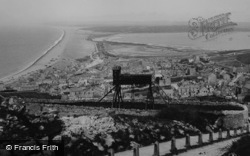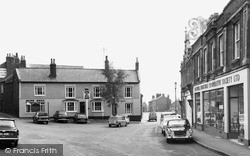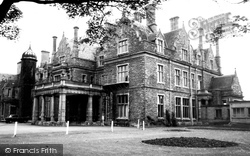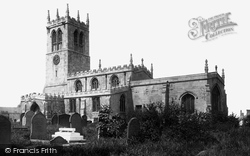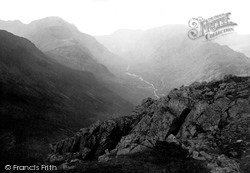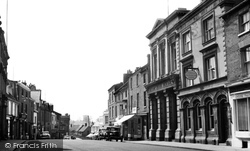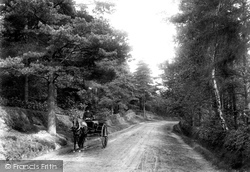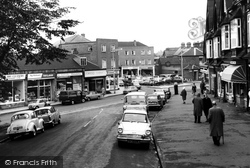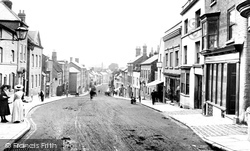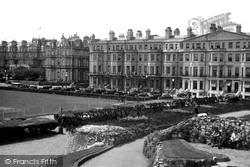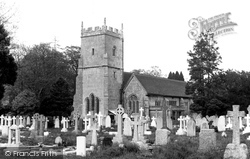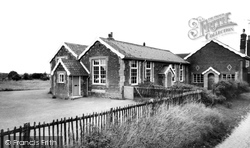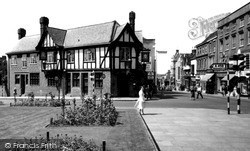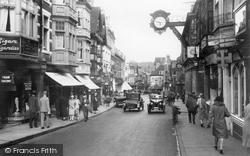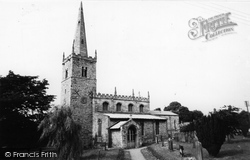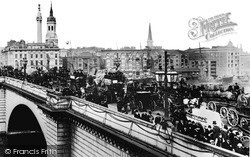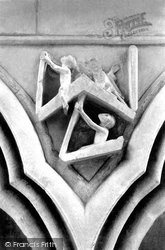Places
Sorry, no places were found that related to your search.
Photos
5 photos found. Showing results 761 to 5.
Maps
83 maps found.
Books
Sorry, no books were found that related to your search.
Memories
1,127 memories found. Showing results 381 to 390.
Rowlands Castle Brickworks
Rowlands Castle Brickworks originally established during the 1880’s, and must have been the biggest employer at the time, next to agriculture. Not all the workforce came form Rowlands Castle, but from local villages ...Read more
A memory of Rowlands Castle in 1963 by
Rowland Hill Ave
Tottenham. I was born in Tottenham 1948. I remember the White Hart Inn, Devonshire Hill Lane, and the dance hall at the back. Also the park round the back of the White Hart, where I spent so much time with all the kids from my ...Read more
A memory of Tottenham in 1960
Rowes Of Netheravon.
As a little girl I remember visiting Auntie Alice and Uncle Bill Rowe. They lived in Vine Cottage just down from the SSW Army Camp. Dad was stationed there after the Second World War, that's where he met my mother Margaret Ada ...Read more
A memory of Netheravon in 1965 by
Roundshaw
I lived on the Roundshaw estate through the 70's and have great memories of playing runouts. I knew every nook and cranny of that estate. I had many friends that lived on nearly every close. I lived in Wallington for nearly 20 years. I ...Read more
A memory of Wallington in 1975 by
Rope Hill Preparatory School Boldre Hants Dorset
In the early 1950s, my brothers and I attended this private school to be taught discipline and to cultivate the finer things in life. We were there from 1951 to 1955 and that school holds memories both ...Read more
A memory of Boldre in 1951 by
Roots
Lived in Eltham from 1940, when Dad was in Artillery, and off to France, came back injured from Dunkirk, but alive, just ! Homes were, Rancliffe Gdns, Milburn Gdns, and Meadowside. Lovely road with unrestricted views across what is now ...Read more
A memory of Mottingham in 1940 by
Rook Lane
I was born in Caterham hospital 19th April 1939 and lived at Cherrywood, Rook Lane, Chaldon until about 1952 when we moved to Bognor Regis. My father was Fred Fishlock who was quite active in social events. I went to St P&P village ...Read more
A memory of Chaldon in 1940 by
Rood End School
I was born in July 1939 in a street with the unbelievable name of `Dog Kennel Lane` in Oldbury, now in West Midlands, can you believe that? Actually I think it was in the Langley area of Oldbury. As I was so young at the time I ...Read more
A memory of Oldbury in 1930 by
Ron Pat Shelton 1977 To 1981
In 1977, my late husband, Ron. and I moved from Melbourne, Australia into 28 Stoke Lyne at the end of the village. It was very dilapidated, consisting originally 2 workman's cottages. They had been converted to one ...Read more
A memory of Stoke Lyne in 1977 by
Rock And Roll Years
I lived in South Harrow from birth in 1945 in 125 Roxeth Green Avenue. I attended Roxeth Hill primary school until failing the eleven plus and then went to Lascelles Secondary Modern. Not the best of pupils although I was in ...Read more
A memory of South Harrow in 1959 by
Captions
1,233 captions found. Showing results 913 to 936.
In this view of the stone-walled canal basin we see the cathedral rising over the roofs, and the old arched bridge.
Its stones tend to be much larger at one end than the other. John Meade Faulkner immortalised the area in his famous smuggling novel 'Moonfleet'.
The road here is much busier today.
The round turret by the side of the main entrance with its ogee cap looks very much like a windmill tower.
Though St Peter's dates from Saxon times, it is believed that Hamelin Plantaganet might have also have rebuilt the church, as much of the stonework is 12th-century.
Its stones tend to be much larger at one end than the other. John Meade Faulkner immortalised the area in his famous smuggling novel 'Moonfleet'.
Much of this lovely valley is now cloaked under a blanket of conifers, as are so many of the Lake District dales.
Rodhouse's, a milliner's and draper's (extreme right), are still remembered with much affection in the town by the many ladies who bought their hats and bonnets there, made by the Misses
The lack of other vehicles meant that it probably didn't matter too much, but the driver of the horse and trap is apparently unaware of the 'keep left' rule of the road.
Although the area developed rapidly in the 19th century (the population was 3,375 in 1841 and increased to 9,721 in 1891), it has been a settlement for much longer.
The Globe Hotel (right) is now much extended, and has been renamed the Scarlet Pimpernel.
Taken from Station Approach, looking towards the village centre, this view is much the same today.
Beyond the wall there would have been more room to spread out, and so immediately the road becomes much wider.
The rendered range with its straight parapet is in marked contrast to the much more ornate Grand Hotel to its left.
Much of the town dates from between 1890 and 1939, and many of its residents were employed by the railway.
He did much of his early oral history recording in the village; this formed the basis of many books, including 'Ask the Fellows who Cut the Hay' in 1956.
Today the grass and beds full of flowers have been replaced by paving stones and beds with bushes planted in them instead - all very much easier to maintain.
Apart from the introduction of a pedestrianisation scheme and some new shop fronts, it remains much the same today.
The village lost its medieval church to bombs in World War II and has expanded much since the War, partly due to Lincoln’s proximity and partly to the RAF.
This five-arched granite structure was constructed in 1827 from the designs of John Rennie. Its excessive cost was once the talk of the city.
Sixty-five years on from photograph No 26547, and not very much has changed, save for the more abundant foliage, and Trumpington Street now echoing to the sound of cars!
The Battle of Powick Bridge took place nearby in 1642 and, more importantly, much of the action of the Battle of Worcester in 1651 took place on and around this site.
The Dean's chapel in the south quire transept has a 13th-century frieze of carvings in the spandrels of the arcading (that is, between the tops of the adjoining arches).
The cobbled Main Street, with The Sun Inn at the top, remains very much the same today.
Places (0)
Photos (5)
Memories (1127)
Books (0)
Maps (83)



